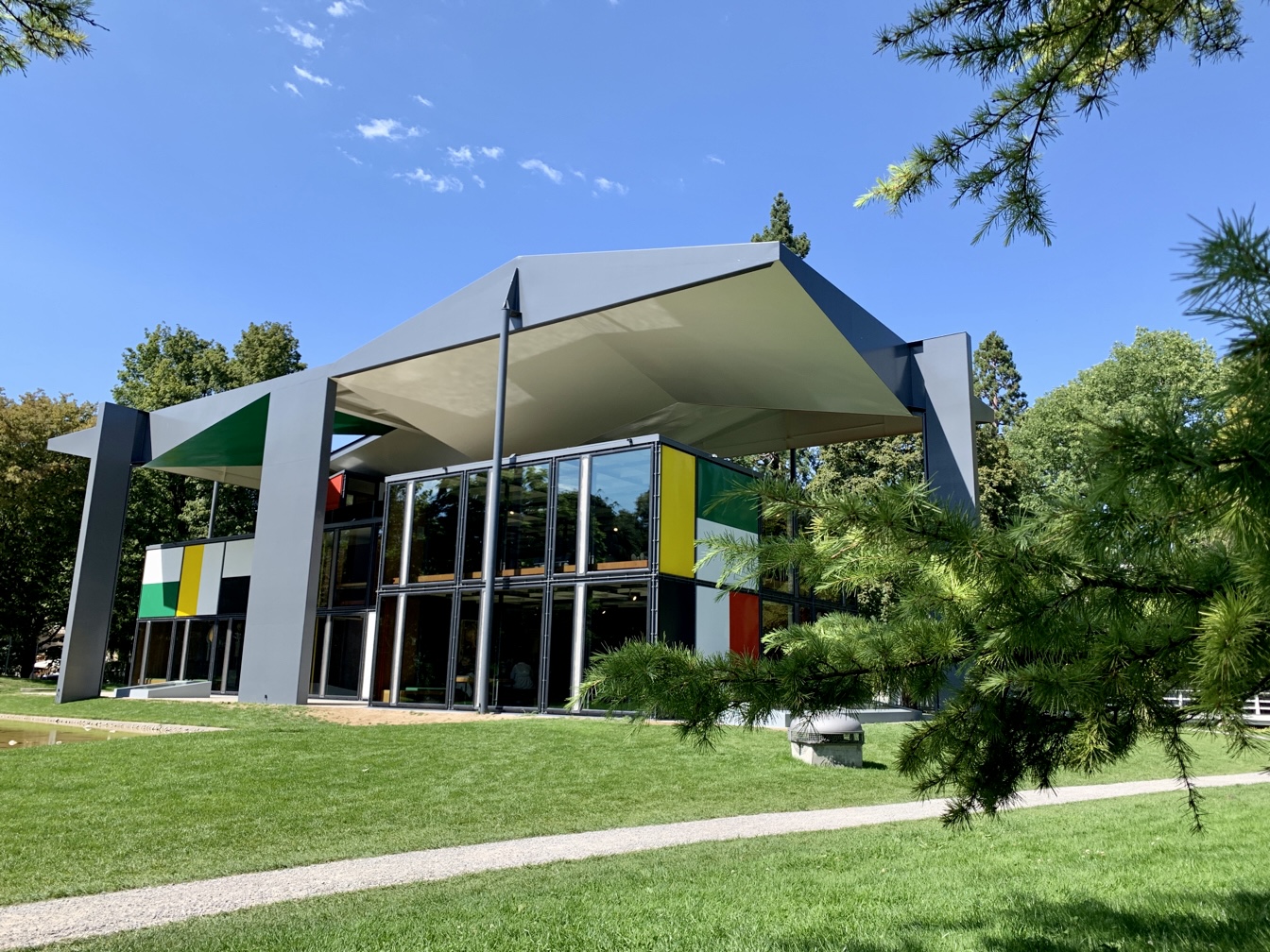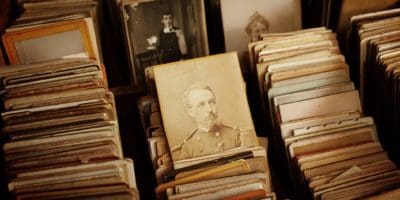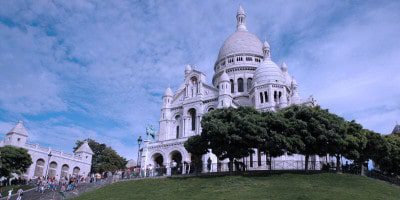
Le Corbusier. Photo by Joop van Bilsen. Wikimedia
Top 10 Outstanding Facts about Le Corbusier
Charles-Édouard Jeanneret, also known as Le Corbusier was born on 6th October 1887. He was a Swiss-French architect, designer, painter, urban planner, and writer who was a pioneer of modern architecture. He was born in Switzerland and obtained French nationality in 1930. Throughout his five-decade career, he designed buildings in Europe, Japan, India, and North and South America.
Le Corbusier was a founding member of the Congrès International d’Architecture Moderne and was dedicated to improving living conditions for residents of congested cities. Le Corbusier designed the master plan for the Indian city of Chandigarh and contributed specific designs for several buildings, particularly the government buildings.
On July 17, 2016, UNESCO inscribed seventeen Le Corbusier projects in seven countries as The Architectural Work of Le Corbusier. This was an Outstanding Contribution to the Modern Movement.
Le Corbusier is still a contentious figure. Some of his urban planning ideas have been criticized for their disregard for pre-existing cultural sites, societal expression, and equality. His associations with fascism, antisemitism, and dictator Benito Mussolini have resulted in some ongoing debate.
1. He dropped out of primary school
Le Corbusier was born in a small town in the mountainous Swiss Jura region, which had been the world’s center of precision watchmaking since the 18th century. The harshness of his surroundings and the puritanism of a Protestant environment marked him throughout his life. Le Corbusier dropped out of primary school at the age of 13 to study enamelling and engraving of watch faces, his father’s trade, at the École des Arts Décoratifs in La Chaux-de-Fonds. There, Le Corbusier’s only teacher, Charles L’Eplattenier, taught him art history, drawing, and the naturalist aesthetics of Art Nouveau.
2. His teacher encouraged him to pursue a career in architecture

Le Corbusier Museum. Photo by Ank Kumar. Wikimedia
L’Eplattenier decided that, after three years of studies, Le Corbusier should become an architect. He went ahead and gave him his first practice on local projects.
From 1907 to 1911, Le Corbusier undertook a series of trips on his advice, which played a critical role in the education of this self-taught architect. He made three major architectural discoveries during his years of travel through Central Europe and the Mediterranean.
3. Villa Fallet was the first house Le Corbusier designed

Villa Fallet. Photo by Archipat. Wikimedia
Le Corbusier began his education by reading about architecture and philosophy in the library, visiting museums, sketching and building buildings. Under the supervision of their teacher, René Chapallaz, he and two other students designed and built their first house, the Villa Fallet.
The house was Louis Fallet’s, a friend of his teacher Charles L’Eplattenier. A large chalet on a forested hillside near Chaux-de-fonds. It had a steep roof in the local alpine style. Not only that, it had carefully crafted colored geometric patterns on the facade.
The success of this house prompted him to build two more in the same area, the Villas Jacquemet and Stotzer.
4. Le Corbusier is nearly blind in one eye
Le Corbusier wore glasses and by 1918 had lost sight in one eye. As a result, he occasionally joked that his spectacles, whose circular horn rims had almost become a trademark, should be half the price.
In 1934, Philip Johnson-designed his own glasses, inspired by Le Corbusier’s signature glasses, and commissioned Cartier to manufacture them.
5. The Soviet government appointed him to a commission

Le Corbusier. Photo from Wikimedia
In 1928, he was given a commission by the Soviet government to build the headquarters of the central office of trade unions. A large office building with glass walls and stone plaques. He designed the Villa de Madrot in Le Pradet as well as an apartment for Charles de Bestigui on the Champs-Élysées in Paris which was later demolished.
In addition, from 1929 to 1933, he built the Swiss Pavilion in Paris’ Cité Universitaire. It included 46 student housing units. He created furniture to match the architecture, and the main salon was decorated with a montage of black-and-white nature photographs. He replaced it with a colorful mural he painted himself in 1948.
In Geneva, he constructed the Immeuble Clarté, a glass-walled apartment building with 45 units. Between 1931 and 1945, he constructed a fifteen-unit apartment building at 24 rue Nungesser-et-Coli in Paris’s 16th arrondissement, including an apartment and studio for himself on the 6th and 7th floors overlooking the Bois de Boulogne. The Fondation Le Corbusier now owns and operates his apartment and studio, which can be visited.
6. The first planned city in India was designed by him

Le Corbusier surveying site of Chandigarh. Photo by Pierre Jeanneret. Wikimedia
In the 1950s, after India’s independence, Le Corbusier designed the country’s first planned city. His city design was inspired by his ideas for the Radiant City.
He also designed several administrative buildings for the city of Chandigarh. Although the city’s design was influential, it was criticized for being unfriendly to pedestrians. Furthermore, the buildings were thought to be massive and monotonous.
7. Le Corbusier designed a car

Le Corbusier’s Voiture Minimum National Automobile Museum Turin. Photo by Rahil Rupawala. Wikimedia
In 1936, Le Corbusier and his cousin Pierre Jeanneret designed a car called Voiture Minimum. It was dubbed a “minimalist vehicle for maximum functionality.” The car was never built, but the architect insisted that it was the inspiration for the Volkswagen Beetle.
8. Le Corbusier met with Albert Einstein
In 1964, Le Corbusier met with Albert Einstein at Princeton University to discuss the “Modulor.” Despite Le Corbusier’s “bad” explanation, the scientist described it in a letter as “a scale of proportions that makes the bad difficult and the good easy.”
9. His works are featured on banknotes
The Swiss-French architect and his works are featured on the Swiss 10 franc banknote, and he has streets named after him in Canada and Argentina.
10. Le Corbusier’s death was peculiar
Le Corbusier drowned in the Mediterranean Sea in 1965, despite his doctor’s orders. The architect was struggling to climb the rocks and refused to accept any assistance from those around him at the time. The 77-year-body old’s was later discovered washed up on the shore, with the cause of death determined to be a heart attack.
He was buried alongside his wife, and a one-of-a-kind concrete structure resembling his own iconic designs was built on top of his gravestone.
Planning a trip to Paris ? Get ready !
These are Amazon’s best-selling travel products that you may need for coming to Paris.
Bookstore
- The best travel book : Rick Steves – Paris 2023 – Learn more here
- Fodor’s Paris 2024 – Learn more here
Travel Gear
- Venture Pal Lightweight Backpack – Learn more here
- Samsonite Winfield 2 28″ Luggage – Learn more here
- Swig Savvy’s Stainless Steel Insulated Water Bottle – Learn more here
Check Amazon’s best-seller list for the most popular travel accessories. We sometimes read this list just to find out what new travel products people are buying.









